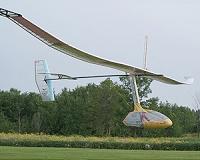 |
Baghdad (UPI) Sep 24, 2010 Iraq is moving forward with plans to buy 24 Hawk jet training aircraft from BAE Systems of Britain, a deal worth up to $1.6 billion, as it gradually rebuilds its air force amid the U.S. military withdrawal. Defense sources said an Iraqi air force team test-flew and evaluated the single-engine jet, which is used to train pilots for supersonic combat, in Britain in May and June. But it isn't clear when a deal for the Advanced Jet Trainer might be concluded. "BAE Systems will support Iraq's requirements, including Hawk, as and when they arise in line with the export licensing requirements of the country," a BAE spokeswoman said. If that transpires, it would be the United Kingdom's biggest arms deal with Iraq since the 1980s when Saddam Hussein was considered the key Arab bulwark against Iranian expansion. Building an air force takes years, possibly decades. Pilot training is a core program and the air force has opened a fixed-wing training school at a base near the northern city of Kirkuk. This is where the Hawks, if they are purchased, will be based. Some 900 of the two-seat aircraft, which first flew in 1974, are in service with a dozen air forces around the world, including Saudi Arabia, the United Arab Emirates and Kuwait. The Financial Times reported in April that Baghdad was also look at buying military aircraft from Italy and South Korea but the status of those possible purchases isn't known. In 1989, while Saddam was still in power, Iraq negotiated to buy 50 Hawk trainers from BAE's predecessor, British Aerospace. But the conservative government of the day, by then increasingly leery of the Iraqi dictator, blocked the deal citing concern that the aircraft could be converted to fly combat missions. That consideration still exists, not so much for the British as for Iraq's neighbors, who are not keen to see an air force with sizable offensive capabilities. Saddam Hussein's 1980 invasion of Iran and 1990 invasion of Kuwait hold bitter memories that aren't likely to evaporate for a long time. The Hawk can be converted into a light combat aircraft armed with a 30mm ADEN cannon under the fuselage and four AIM-9L Sidewinder air-to-air missiles, or other ordnance, under the wings. One of the objectives of the new Iraqi air force is to develop a close air support capability for counter-insurgency operations and the Hawk would be a low-cost option on that score. With Iraqi pilots flying more and more combat missions involving ground attack, there is some concern about where the development of the air force will go. "Iran has been particularly concerned that the Iraqi military, particularly its air force, will regain offensive capability," the Texas global security consultancy Stratfor noted. "Because of the devastating experience in 1980-88 Iran-Iraq war, Iran wants Iraqi security forces to be a defensive force primarily." But, Stratfor observed, if Iraq is to be stabilized, "the Iraqi air force will need to expand its capabilities significantly -- especially in the area of close air support -- if it is to fully support Iraqi security forces." That, it concluded, "flirts with an area of air power that Iran has no intention of permitting in Iraq." Hawks would provide a major boost for the new Iraqi air force, which ultimately wants to acquire 96 Lockheed Martin F-16s, enough for six squadrons. This, too, is viewed with considerable misgivings by Iraq's neighbors. The Iraqi air force, the oldest in the Arab world, was established in 1931 under British tutelage and fought in half a dozen conflicts, including the 1980-88 war against Iran and the 1991 Gulf War against a U.S.-led coalition. The Baghdad government has for some time been moving toward large-scale investment in air power. U.S. and Iraqi commanders envisage a self-sufficient air force with 350 aircraft and some 20,000 personnel by 2020. That will require the Iraqi government to spend around $2 billion a year for the next decade. Much will depend on how successful Baghdad is in achieving its aim of quadrupling oil production from around 2.3 million barrels a day to 10 million-12 million in the next six years.
Share This Article With Planet Earth
Related Links Aerospace News at SpaceMart.com
 Human-Powered Ornithopter Becomes First Ever To Achieve Sustained Flight
Human-Powered Ornithopter Becomes First Ever To Achieve Sustained FlightToronto, Canada (SPX) Sep 24, 2010 Aviation history was made when the University of Toronto's human-powered aircraft with flapping wings became the first of its kind to fly continuously. The "Snowbird" performed its record-breaking flight on August 2 at the Great Lakes Gliding Club in Tottenham, Ont., witnessed by the vice-president (Canada) of the Federation Aeronautique Internationale (FAI), the world-governing body for a ... read more |
|
| The content herein, unless otherwise known to be public domain, are Copyright 1995-2010 - SpaceDaily. AFP and UPI Wire Stories are copyright Agence France-Presse and United Press International. ESA Portal Reports are copyright European Space Agency. All NASA sourced material is public domain. Additional copyrights may apply in whole or part to other bona fide parties. Advertising does not imply endorsement,agreement or approval of any opinions, statements or information provided by SpaceDaily on any Web page published or hosted by SpaceDaily. Privacy Statement |